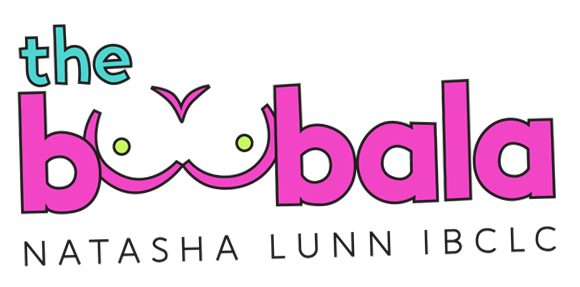Page Content
- What to do if your milk supply is too high?
- What is the 5 5 5 rule for breast milk?
- Does leaking breasts mean good milk supply?
- How to slow down oversupply of breast milk?
- Does pumped breast milk lose nutrients?
- What is the 120 pumping rule?
- Should I pump if I have oversupply?
- How many oz of breast milk is an oversupply?
- Can wearing a bra reduce milk supply?
- How long does it take to fix milk oversupply?
Understanding Milk Oversupply
Experiencing an oversupply of breast milk can be a perplexing and uncomfortable situation for many new mothers. While having an abundant milk supply might seem advantageous, it can lead to feeding difficulties for your baby and discomfort for you. Recognizing the signs of oversupply is the first step toward managing it effectively. Symptoms may include a baby who struggles to latch, excessive spitting up, or a mother feeling engorged or experiencing painful letdowns.
Strategies to Reduce Milk Oversupply
To tackle the issue of oversupply, several strategies can be employed, each aimed at normalizing milk production while ensuring that both mother and baby remain comfortable.
1. Block Feeding:
One of the most effective methods is block feeding, which involves feeding your baby from one breast for a set period (usually 3-4 hours) before switching to the other breast. This technique helps to reduce the overall milk supply by allowing the breast to fully drain, signaling your body to produce less milk.
2. Adjusting Feeding Positions:
Changing the way you breastfeed can also help. Positions that utilize gravity, such as laid-back breastfeeding, allow your baby to have more control over the flow of milk. This can prevent overwhelming your baby with too much milk at once.
3. Frequent Burping and Breaks:
During feedings, it’s beneficial to take breaks and burp your baby frequently. This not only helps your baby manage the flow of milk but also gives them a chance to pace themselves, reducing the likelihood of discomfort from oversupply.
4. Pumping Considerations:
If you are pumping, consider reducing the frequency or duration of your pumping sessions. Over-pumping can signal your body to produce even more milk, exacerbating the oversupply issue.
5. Consult a Professional:
If these strategies do not alleviate the oversupply, it may be wise to consult a lactation consultant or healthcare professional. They can provide personalized advice and support tailored to your specific situation.
Conclusion
Managing milk oversupply is crucial for both the comfort of the mother and the feeding experience of the baby. By implementing techniques such as block feeding, adjusting feeding positions, and consulting with professionals, mothers can effectively reduce their milk supply and create a more harmonious breastfeeding experience. Remember, while it may feel overwhelming, you are not alone in this journey, and support is available.
What to do if your milk supply is too high?
Try feeding positions that use gravity to slow the flow of milk, such as a laid-back nursing position. Burp frequently and give your infant breaks to pace him / herself. Firmly press the pinky side of your hand into your breast (like a karate chop) during the initial fast let down to slow the flow of milk.
What is the 5 5 5 rule for breast milk?
Something I recommend to moms is the 5-5-5 rule. Try and use milk within five hours at room temperature, five days in the fridge, and by five months in the freezer.
Does leaking breasts mean good milk supply?
You can leak breastmilk for a variety of reasons including having a full supply, or if your body is not yet sure how much to produce, if your mature milk is starting to come in, if you’ve missed a feeding, or even if you are just thinking about your baby.
How to slow down oversupply of breast milk?
How is breastmilk oversupply treated?
- Feed your baby from only one breast at each feed.
- Space feeds out — at least 2 ½ hours apart.
- At your next feed, change to your other breast.
- Continue this pattern for a few days.
- You might need to hand express a small amount from the unused breast to relieve pressure or discomfort.
Does pumped breast milk lose nutrients?
Generally, when freshly pumped, breast milk is at its peak regarding nutrients. Beyond this timeframe, vitamins, fatty acids, enzymes, antibodies, and growth factors might be a gradual loss.
What is the 120 pumping rule?
The first 12 weeks of your breastfeeding journey requires frequent breastmilk removal, stimulating healthy milk production. Studies show moms who exclusively pump for a minimum of 120 minutes per day can make enough to feed their babies primarily breastmilk.
Should I pump if I have oversupply?
Make sure you are only expressing a small amount – 1 ounce or so – to prevent making an oversupply problem worse. The goal is to feel some relief from engorgement, but not to pump fully.
How many oz of breast milk is an oversupply?
If average is three to five ounces combined and you are getting that from each breast, you have an oversupply. If you are getting more than five ounces from each breast (and, ahem, you don’t have twins) then you have, let’s call it, an aggressive oversupply.
Can wearing a bra reduce milk supply?
Your nursing bra should be supportive but not tight. It should not leave any indentations or marks on your skin. If your bra is too tight, it could cause plugged milk ducts, mastitis or a decrease in your milk supply.
How long does it take to fix milk oversupply?
There are a few different treatment plans to help mothers who are experiencing an oversupply of breast milk. Some approaches work quickly, while others will take up to 1-2 weeks to reduce the milk supply. Every mom and baby responds differently. You may need to try a couple of solutions to fully resolve the concern.

